Beard transplantation
Beard transplantation
Everything you need to know
Beards are a symbol of masculinity for men. Many choose to grow a beard, mustache, sideburns or follow trends such as the goatee beard, as a statement of charm and confidenceHowever, facial hair is not always strong or uniformly dense enough to favor such a look.
Beard transplantation is the only method that can enhance density and correct the shape of facial hair in a 100% natural way. In fact, after hair transplantation, Beard transplantation is the 2nd most popular hair follicle transfer treatment chosen by men, according to the latest statistical survey by the International Society of Hair Restoration Surgery. Beard transplantation using the FUE method allows us to restore the density and shape of the beard, offering a completely natural, dense result even in cases where the male face is completely hairless.
The advantages of FUE Hair Transplantation
The advanced FUE technique has made the beard transplantation method a painless, microsurgical procedure, which leaves no scars or marks on the scalp or beard area, nor does it entail any discomfort for the patient.
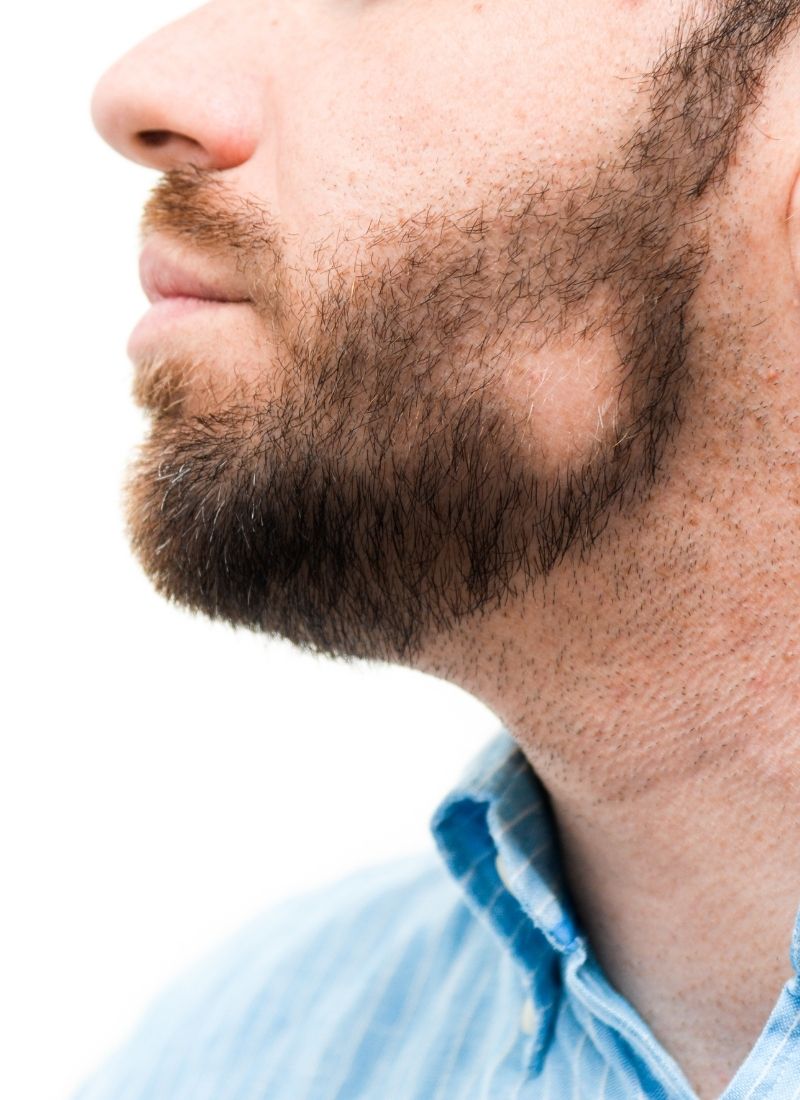
When is beard transplantation necessary?
Long gone are the days when a man's face was considered a "civilized" appearance. For many years, neat or even unkempt facial hair has been back in fashion. In fact, research agrees that Women find men with beards more attractiveThe beard has emerged as a symbol of masculinity, and men who adopt it as a style seem to exude greater maturity and higher social status.
Many times, however, male facial hair is sparse, weak, or even nonexistent. Many men are almost hairless on the face or have gaps ("patches") between their beards, either due to heredity, or due to an injury, burn, scar or some invasive procedure. In these cases, beard transplantation can restore the density and uniformity of facial hair growth in a 100% natural way. The result is completely satisfactory and permanent!
How is beard implantation performed?
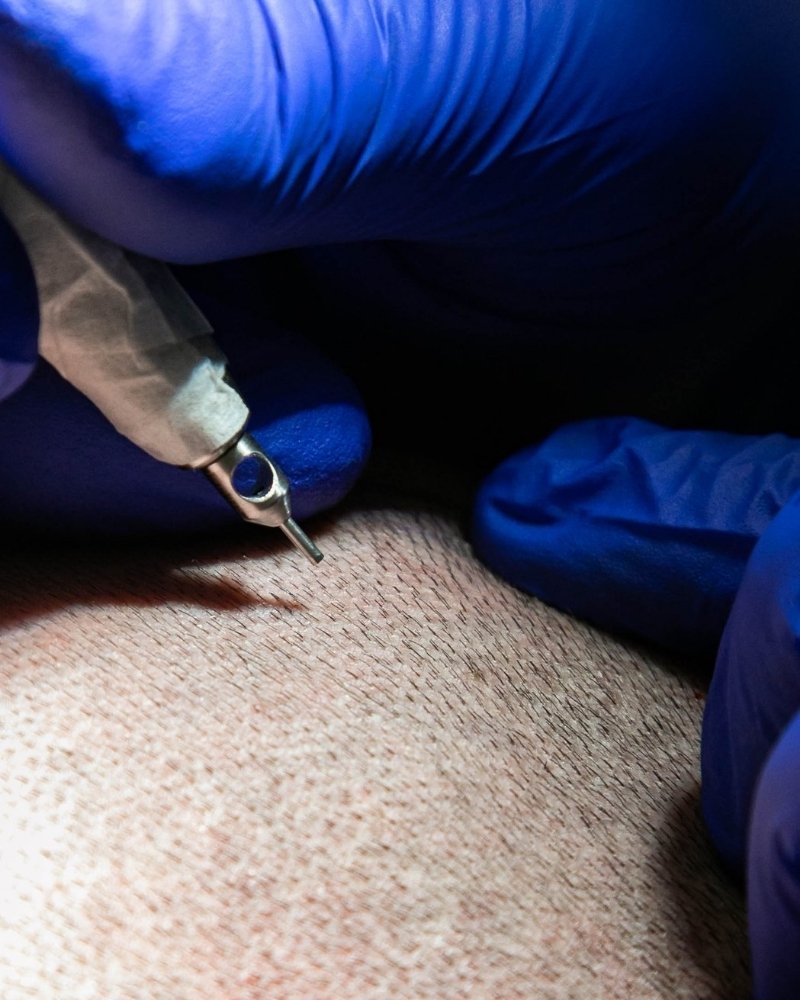
Suitable candidates for beard transplantation
Beard transplantation is an ideal treatment for areas of the face that are completely hairless or have sparse hair growth for the following reasons:
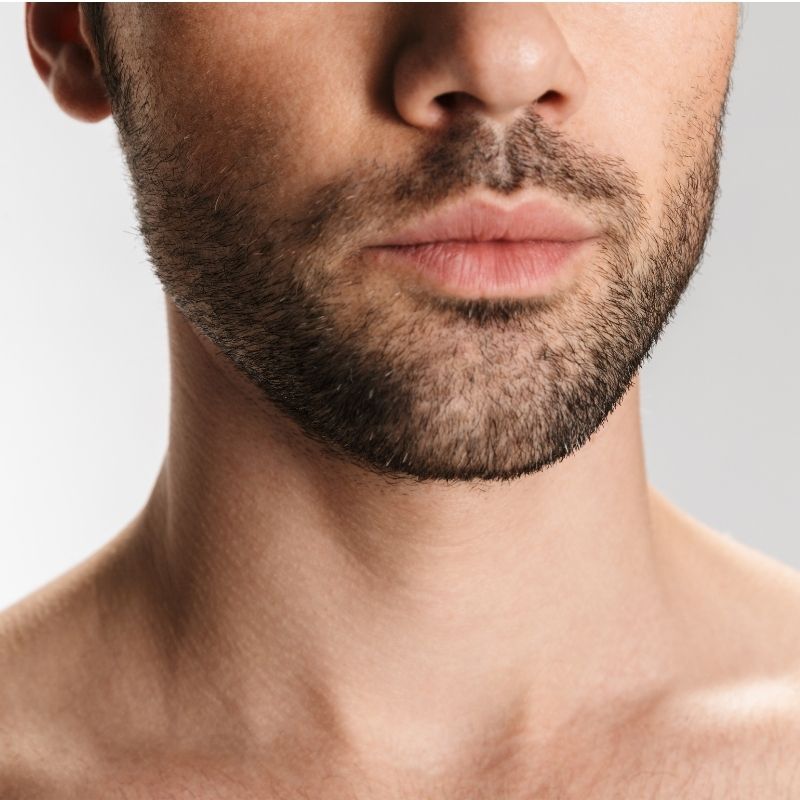
Natural, permanent result
In barber shops, hairdressers attempt to correct or camouflage sparse facial hair by trying different designs and different ways of shaving or trimming sideburns, beards, moustaches and goatees, but the result is temporary. The great advantage of FUE beard transplantation is that the shape and boundaries of hair growth are determined at the design stage based on what suits each male face, and the result is permanent, without requiring any special care or effort to maintain it.
The 3 stages of beard transplantation
Stage 1: Study and design
This is preceded by a detailed study of the face and a discussion about the desired shape of the beard. After identifying the needs for thickening the thinning areas, the possibilities of the donor area are examined and then detailed planning for the distribution of available grafts in sparse areas to achieve maximum density and for the result to be harmonious and symmetrical.

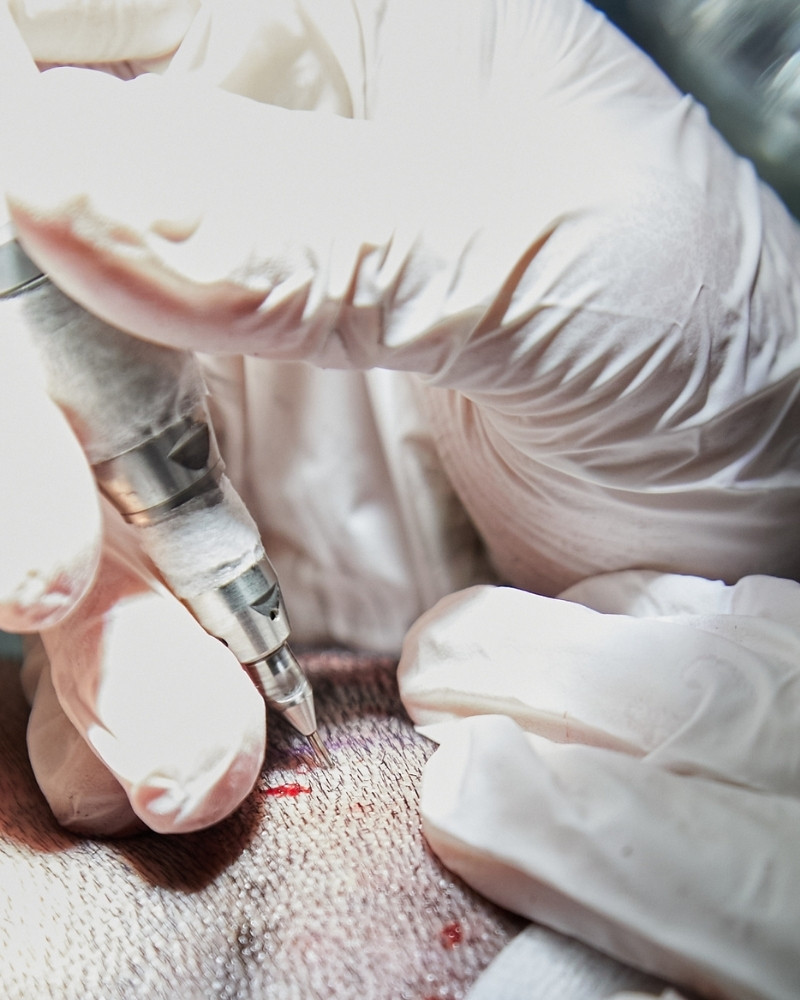
Stage 2: Hair follicle extraction
In the first stage of the procedure, the necessary hair follicles are extracted from the back area of the scalp. They are mainly taken hair follicles that carry one or at most two hairs, since beards by nature consist mainly of single hair follicles and our goal is to achieve a completely natural result.
For beard transplantation, it is not always necessary to shave the head. If the transplantation involves a small number of hair follicles, then these can be taken with the trimming small areas of the head which are not visible especially if you have long hair (unshaven method). However, if complete restoration of facial hair is required, then shaving of the scalp will be necessary. Before the extraction of the hair follicles, local anesthesia is applied to the donor area. Until the next step of implanting the grafts, the hair follicles are kept in a special solution that ensures their survival.
Stage 3: Hair follicle implantation
After applying local anesthesia to the recipient area of the face, the doctor proceeds with the implantation of the grafts using the special tool Implanter Pen, with which it inserts the hair follicles in one movement in their new position, without first creating a hole with a scalpel. The hair follicles are implanted almost parallel to the skin, as this is the normal angle of beard growth.
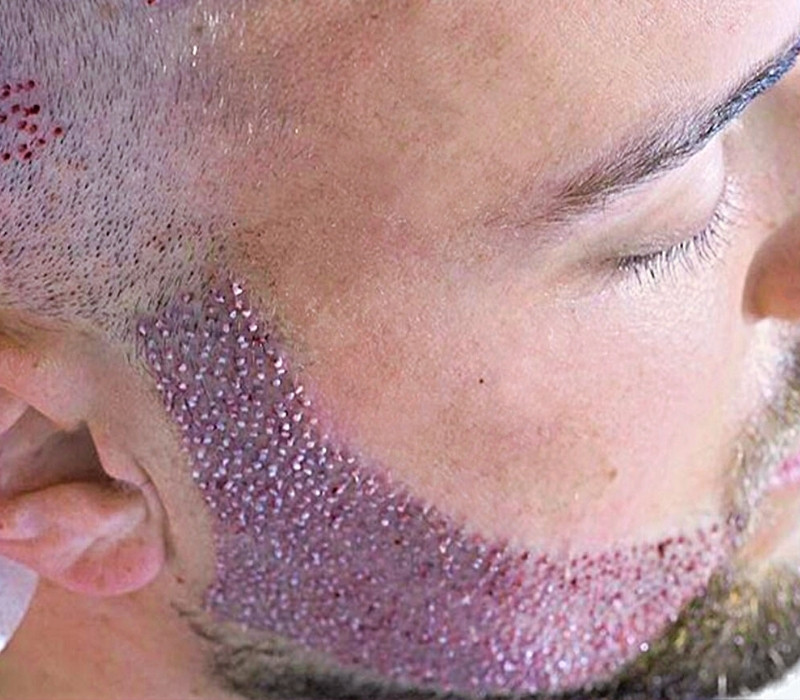
Frequently Asked Questions
The first is hidden.
Your content goes here. Edit or remove this text inline or in the Content settings module. You can also style every aspect of this content in the Design settings module and even apply custom CSS to this text in the Advanced settings module.
Can hair follicles be taken from the body, e.g. from the sternum?
In practice, they could be taken, but in reality they do not serve, as we need hair follicles that have the same characteristics as the hair follicles of the face. Beyond color and thickness, a basic characteristic of beards is that they grow quite long if not shaved. This characteristic is also shared by the hair follicles of the scalp, while on the contrary, the hair follicles of the sternum reach a specific, limited length. Therefore, the sternum is not the ideal donor area in this case.
Can hair follicles be obtained from another donor?
No, because the body will reject them as foreign bodies. In any transplant, in order to prevent rejection of the grafts, patients take immunosuppressive drugs for life. In this case, however, it would be excessive for someone to follow such a long-term treatment just for aesthetic purposes.
How many hair follicles are needed to restore facial hair growth?
The number of hair follicles required depends on the density and diameter of the existing hair. For a small “patch” between the beard, 100-200 hair follicles may be enough. However, if a full beard transplant is necessary, then approximately 3,000 hair follicles may be needed. This is a fairly demanding area for which more hair follicles may be needed than are needed for a hair transplant.
Does beard implantation hurt?
This is a completely tolerable procedure, as at reGrow Clinic, beard transplantation is performed using the minimally invasive FUE technique, which means that hair follicles are extracted one by one from the back of the scalp and are also implanted one by one in the thinning areas. The entire hair follicle transplantation process is performed with special microscopic tools that do not injure or cause scars or marks on the skin. Beard transplantation is completed using local anesthesia in the clinic.
At what age can beard transplantation be performed?
It is important that facial hair growth is complete and the hair has reached its final diameter and density. On average, facial hair growth is complete at the age of 18-21, depending of course on the heredity and genes of each man.
When will I be able to shave again?
We recommend that our patients avoid shaving for approximately 20 days after beard implantation.
When are the results of beard transplantation visible?
The growth of new beards is a process that takes about a year to complete and goes through the same stages that the scalp goes through in a hair transplant. In the first few weeks, most of the new hairs fall out, as a result of the shock that the hair follicles have undergone during their transfer. This is a completely normal and expected phenomenon that should not worry you. Around the 2nd-3rd month, the hairs begin to grow back, gradually restoring density in the thinning areas. Around the 6th-8th month, you now have a very good idea of the result, which takes about 12 months to complete.
Do new beards require special care?
No. This is your own natural hair, which does not require any special care or maintenance. You can wet it normally when washing your face, soaping it, shaving it or trimming it.
In which cases is beard implantation contraindicated?
Beard transplantation cannot be applied to patients who suffer from any skin disease, uncontrolled trichotillomania, or a very poor donor area that does not provide sufficient grafts.